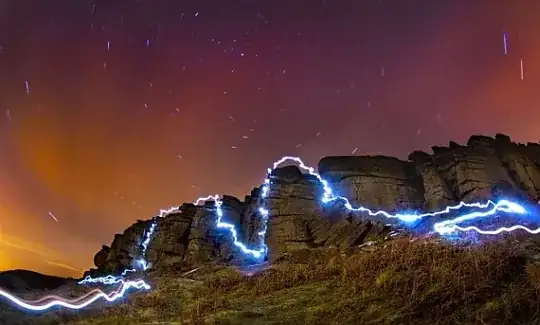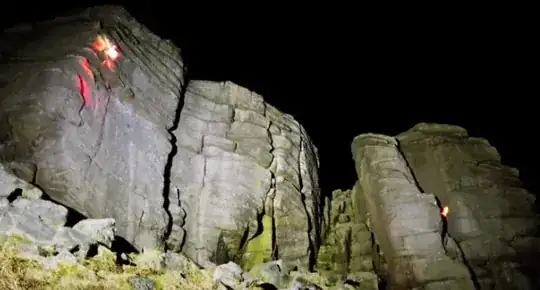I enjoyed reading the fascinating story of how a climber took an amazing long-exposure photo of his climb up, down and around a Peak District landmark.
See: "Blazing a trail! Climber takes spectacular light streak images during Peak District trek"
I don't doubt that he has produced a beautiful picture, but there is some alarm bells ringing in my head wondering if the light streaks were really created by his head-lamp as he performed his arduous journey.
So I'd appreciate if you could take a sceptical look at this image:

How long would it take to create an image of those stars that streak in that fashion and is it possible to travel the distance marked by the climber's headlamp in that time?
So are those lights the fleeting wisp of a hand torch, Photoshop or the climber's head lamp?

